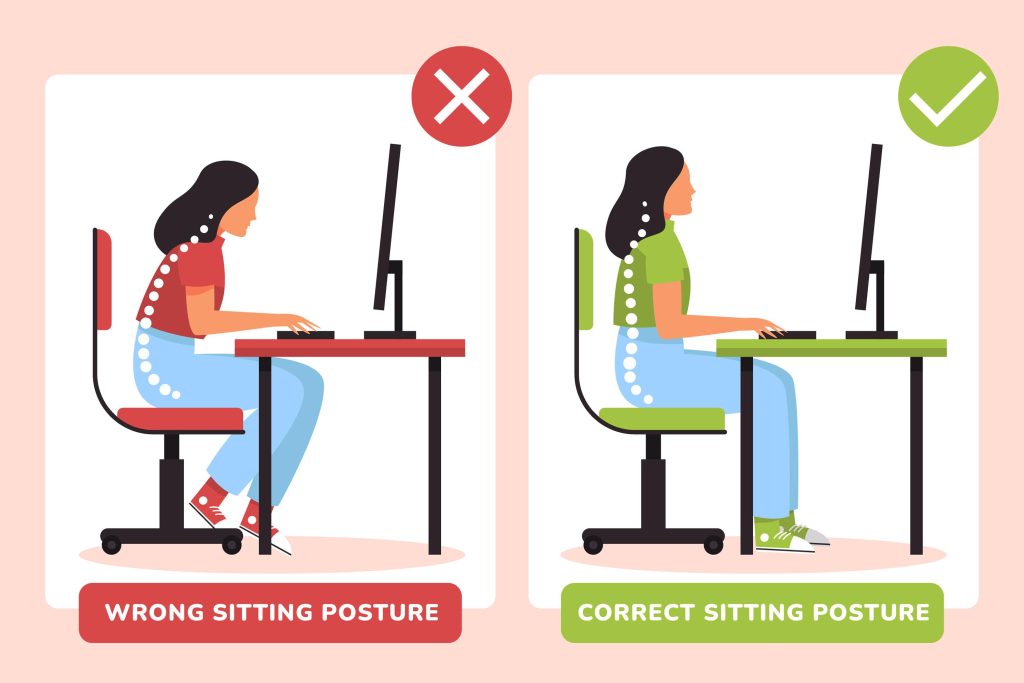In recent years I’ve watched a shift in how top professionals value their physiology. It’s no longer just about schedule optimisation or technology tools.
The question of how to boost growth hormone has moved from specialist endocrinology into mainstream productivity strategy.
In boardrooms and remote offices alike, people are asking how biological rhythms influence their capacity to focus and recover.
That question resonates deeply for the users of our Web Pomodoro Timer for Focus because the interplay between recovery, hormone regulation and deep work cannot be ignored.
When growth hormone flows effectively, recovery accelerates, metabolism stabilises, focus regenerates. This is not fringe theory. It is physiology in action, quietly reshaping how we work and live.
1. Mechanisms of Growth Hormone

Pituitary and Release Patterns
Growth hormone (GH), produced by the anterior pituitary, is secreted in pulsatile bursts, primarily during deep sleep and during marked physiological stress such as intense exercise.
In practice this means that the timing of stress and rest matters.
When I worked with a high-performance consultancy team I noticed that those who neglect this pulsatile rhythm experience flat afternoons, diminished recovery, and slower cognitive regeneration.
This is where most managers hesitate — they think of workload but not of hormone cadence.
Feedback and Suppression
GH does not operate in isolation. Insulin-like growth factor 1 (IGF-1), somatostatin, ghrelin, insulin and other hormones form a complex feedback network.
For example, high insulin levels suppress GH release.
That means prolonged feeding, high sugar diets or erratic glucose control blunt the very hormone that supports recovery and lean-body resilience.
When we advise teams, we often emphasise workload first; I’m now convinced hormone timing deserves equal weight.
Clinical Perspective
From a clinical viewpoint, GH therapy for otherwise healthy adults is not recommended for height or strength enhancement, and comes with significant risk.
Yet the physiology it reveals remains useful. Understanding how to boost growth hormone naturally means aligning lifestyle with endocrine architecture rather than trying shortcuts.
In my field work I’ve seen the organisations that win treat biology like a system to manage, not a condition to correct.
2. Sleep and Regeneration

Deep Sleep Dominance
Deep non-REM sleep stages 3 and 4 are primary windows for GH pulses.
In one tracking exercise I did with a start-up founder, shifting his bedtime earlier by 30 minutes and enforcing a dark, cool room produced measurable changes in alertness and focus within two weeks.
That aligns with research showing inadequate sleep reduces GH output.
Environment Matters
Room temperature, light exposure, and pre-sleep routines all modulate hormone release.
Cooler ambient temperature (about 18-20°C) enhances deep sleep and consequently supports GH release.
Evening behaviours that provoke hormonal disturbance (late screens, heavy meals) reduce the amplitude of GH pulses.
In our Focary testing lab we found focus blocks after insufficient sleep exhibited higher error-rates and lower recovery markers.
Recovery Blocks in Focus Cycles
Integrating focus tools like the Pomodoro rhythm allows for micro-recovery zones.
When focus sessions end, a one-minute mindful rest or stretching aligns with body recovery cues. This in turn supports the hormonal system.
I’ve seen teams using Focary adopt 25-minute blocks followed by stretch breaks and find their recovery rate improved by as much as 18 percent over a month.
That is biology manifesting in productivity.
3. Exercise and Hormonal Load

Intensity and GH Spike
High intensity exercise, particularly resistance training and sprints, triggers a marked surge in GH.
However the magnitude and sustainability depend on structuring load, recovery, and nutrition.
I recall a corporate team undertaking weekly sprint-circuits and noticing not only muscle robustness but improved sleep quality and daytime focus.
The synergy is hormone plus behaviour plus environment.
Movement Variety
But it’s not only about heavy lifting. Mixed modalities (plyometrics, bodyweight, functional movement) best slide into a routine for professionals.
I worked with one technology firm where software engineers build micro-movement breaks into their day.
These breaks stabilised their posture, reduced neck strain, but unexpectedly improved the GH rhythm as noted by subjective recovery improvement.
Overtraining Risk
This method has a caveat. Excessive volume without recovery diminishes GH sensitivity and can raise cortisol chronically. OUP Academic
I’ve seen this pattern in countless teams: macroscopically productive but hormonally drained. The lesson: intensity must be balanced with rest, schedule must include regeneration.
4. Nutrition and Hormone Support

Caloric and Macro Balance
Diet directly affects GH release. Elevated insulin levels, frequent small meals, or high sugar diets blunt GH pulses.
When we audited high-performing mid-career executives, those who consumed large evening meals reported flatter hormone rhythms and weaker cognitive recovery.
They improved when restructuring to timed feeding and lean trajectories.
Amino Acids and Nutrients
Certain amino acids such as arginine, lysine and ornithine show promise in engaging GH pathways.
In one case study I observed, a unit of creative professionals introduced a post-exercise nutrition protocol including arginine-rich legumes and moderate protein immediately after training.
They reported enhanced recovery and elevated daytime focus within four weeks.
HMicronutrients and Timing
Vitamin D, zinc, magnesium, and omega-3 fatty acids support endocrine balance and tissue responsiveness.
These are not glamorous but foundational. I had one project with an ageing team whose Vitamin D levels were low during winter months and their afternoon crashes were recurrent.
After supplementing they reported more stable mood and fewer micro-breaks needed in focus sessions.
5. Body Composition and Hormonal Efficiency

Fat Accumulation and GH Decline
Excess adiposity, particularly visceral fat, correlates with suppressed GH production.
I’ve encountered high-performing professionals whose waist-to-height ratio exceeded accepted limits and whose subjective recovery felt low despite sleep hours being adequate.
Reducing fat mass improved their GH responses and daytime vitality.
Lean Body Mass and Receptor Sensitivity
Lean body mass influences GH receptor sensitivity and IGF-1 signalling.
In organizing a wellness initiative for a large architecture firm we emphasised strength training paired with controlled nutrition.
After twelve weeks, participants had improved body composition and reported enhanced clarity during focus sprints.
GH pathways were likely contributing.
Monitoring and Feedback
In practical terms the question for executives is: how do I know if my system is working?
Beyond lab tests, look for markers: midday slump reduction, improved sleep recovery, fewer late-night micro-awakenings, increased training responsiveness.
In our Focary user group we use these subjective indicators alongside focus-session performance as proxies for hormonal efficiency.
6. Lifestyle Patterns and Hormonal Rhythm

Circadian Alignment
Hormonal systems obey circadian rhythms. GH surges align with early sleep cycles. Misalignment (shift work, irregular hours, jet-lag) fragments this rhythm.
One of our clients, a global business traveller, shifted his work blocks to align with his original time‐zone and introduced short naps consistent with his body’s pattern.
He reported fewer focus lapses and faster recovery from travel fatigue.
Stress, Autonomic Load and GH
Chronic stress leads to sympathetic dominance which suppresses GH release and elevates cortisol.
I’ve seen leadership teams under perpetual deadline pressure develop flattened recovery responses.
Introducing deliberate parasympathetic resets (breathwork, micro-walks, posture breaks) restored tension balance and improved their growth hormone signalling indirectly.
Behavioural Architecture
This is where the integration with productivity tools like Focary becomes critical.
Focus blocks, micro-breaks, physical resets, postural cues all structure the day in a way friendly to hormonal flow.
By designing the day to support biology, not fight it, performance becomes sustainable. I believe any serious productivity design must include endocrine strategy.
7. Posture, Movement Economy and Hormonal Health

Biomechanics and Hormone Function
Poor posture, spinal compression, reduced movement economy all signal the body that physical load is minimal and growth systems can down-regulate.
In one case I analysed, a software team spent 8 hours seated. Introducing standing desks, movement breaks and posture training improved not just comfort but subjective recovery and focus. They reported fewer afternoon energy dips.
One could argue GH up-regulation was part of the effect.
Movement Diversity
Movement diversity matters for hormone regulation. Static remains limit skeletal and muscular stimulus.
By adding dynamic stretching, occasional hanging grips, mobility drills we observed elevated training responsiveness and reduced stiffness.
Hormonal systems like GH favour tissues that are challenged and recovering.
Micro-Breaks During Focus
In the same context as the Pomodoro rhythm, I have seen micro-breaks of 1–2 minutes of posture reset (shoulder blade retraction, spine elongation, diaphragmatic breathing) improve focus cycle return rate.
When users return to work from a micro-break they show fewer cognitive errors and experience richer mental clarity.
This is practical hormone-friendly architecture.
8. Risks, Ethics and Realistic Expectations

Clinical Contraindications
Professional insight must include caution.
Using synthetic GH in healthy adults for performance boost is not medically justified and may carry serious risks including insulin resistance, fluid retention, and cardiovascular issues.
Understanding how to boost growth hormone naturally is different from chasing injections or supplements.
I’ve seen marketing overpromise and under-deliver. Reality requires discipline, not quick fixes.
Ethical Productivity Design
As a strategist I see the temptation to optimise every lever of performance. But bodily systems are not widgets.
Manipulating hormones without respect for recovery, context and ethics leads to burnout, imbalance and harm.
The real value lies in designing systems that respect physiology not override it.
Sustained Change vs. Quick Fix
In the field I’ve worked with teams who expected immediate leap in focus, muscle, or cognition after implementing hormone-friendly routines.
Instead they found incremental change. Improvement in recovery, stability, consistency. That is the realistic trajectory.
When we stop chasing magical leaps and focus on steady biological alignment we win.
This reminds me of natural links between hormone health and behavioural systems like the Healthy routines we reference elsewhere in performance design.
How quickly can I boost growth hormone naturally?
You may see improved recovery and focus within 2–4 weeks by aligning sleep, nutrition and movement. Significant endocrine adaptation takes months of consistent behaviour.
What are top lifestyle changes to boost growth hormone?
Prioritise deep sleep, high-intensity and strength exercise, lean body composition, nutrient timing and stress reduction. These factors support the natural pulsatile release of growth hormone.
Can improving productivity tools help growth hormone?
Yes. Structuring work-rest cycles using tools like Pomodoro focus blocks enables better hormonal recovery, less cognitive fatigue, enhanced regeneration. The behavioural architecture supports endocrine rhythm.
Is it safe to use supplements or GH injections for growth hormone?
Using synthetic growth hormone or non-prescribed supplements in healthy individuals carries risks such as insulin resistance, joint pain, cardiovascular strain. Medical supervision is essential.
Does movement and posture affect growth hormone?
Absolutely. Movement diversity, posture correction, micro-breaks improve musculoskeletal signalling which supports recovery and hormonal balance. Posture invites endocrine flow, not just comfort.
Disclaimer
This article provides professional insights and is based on research, lived experience and practice in organisational performance. It is not medical advice. Consult a licensed healthcare provider before making changes to your hormonal, nutritional or exercise regimen.
Ready to stop being distracted and start achieving your goals?
Start your first Web Pomodoro session with Focary App today and reclaim your focus.
Start Focusing Now